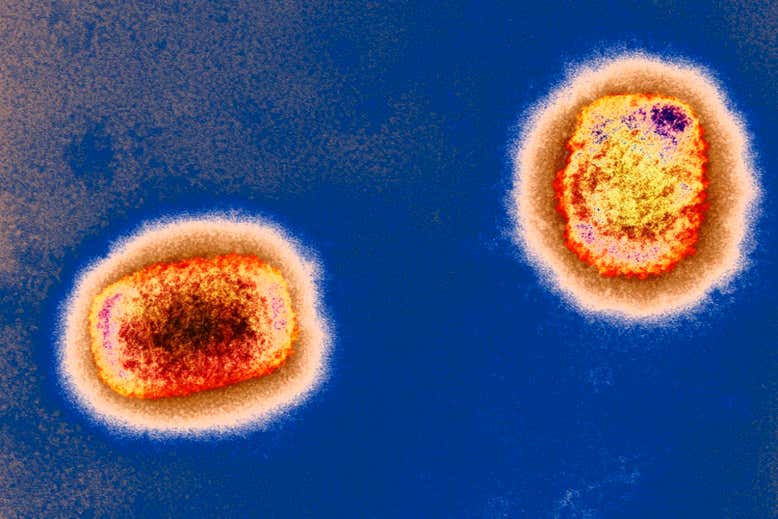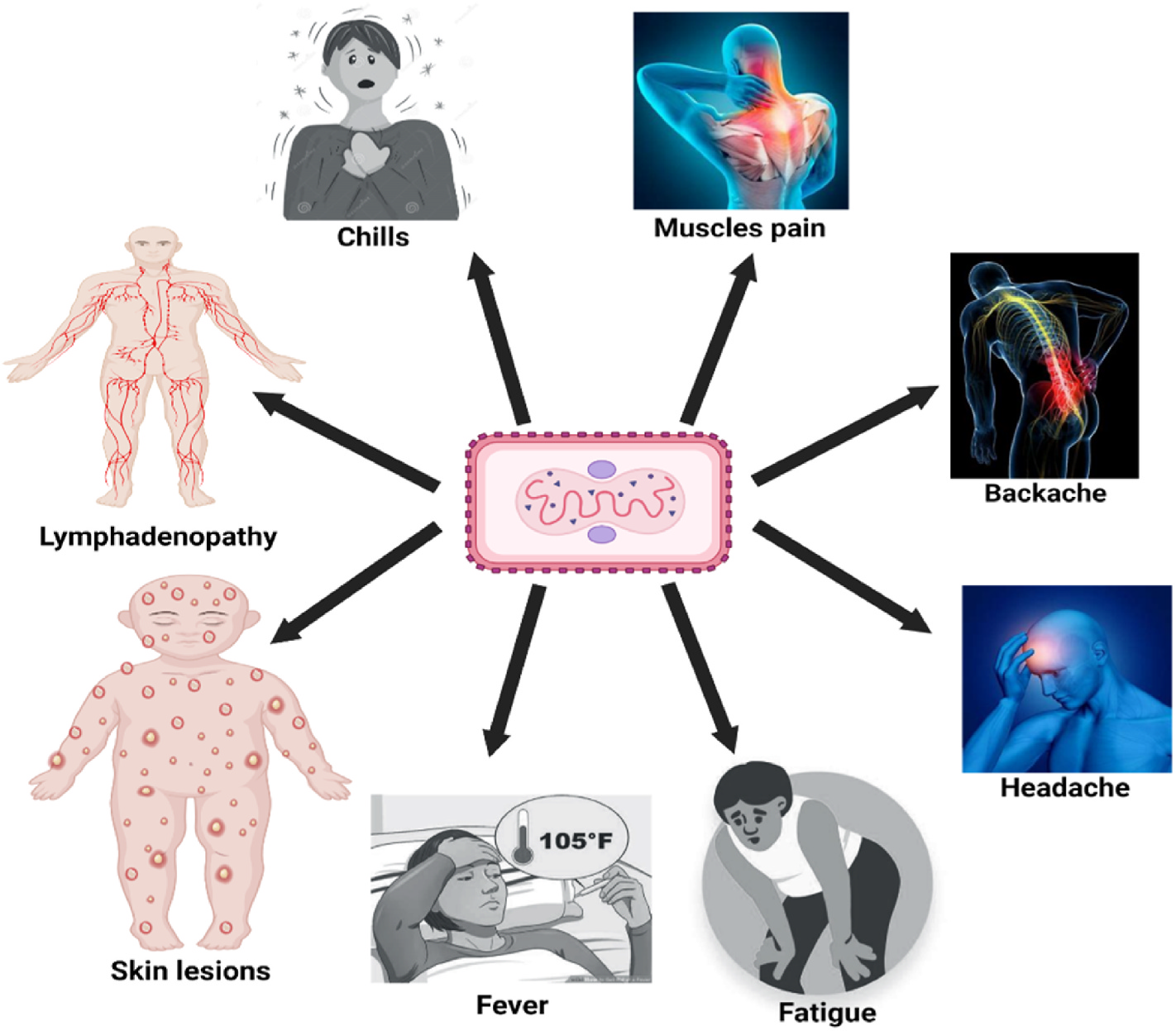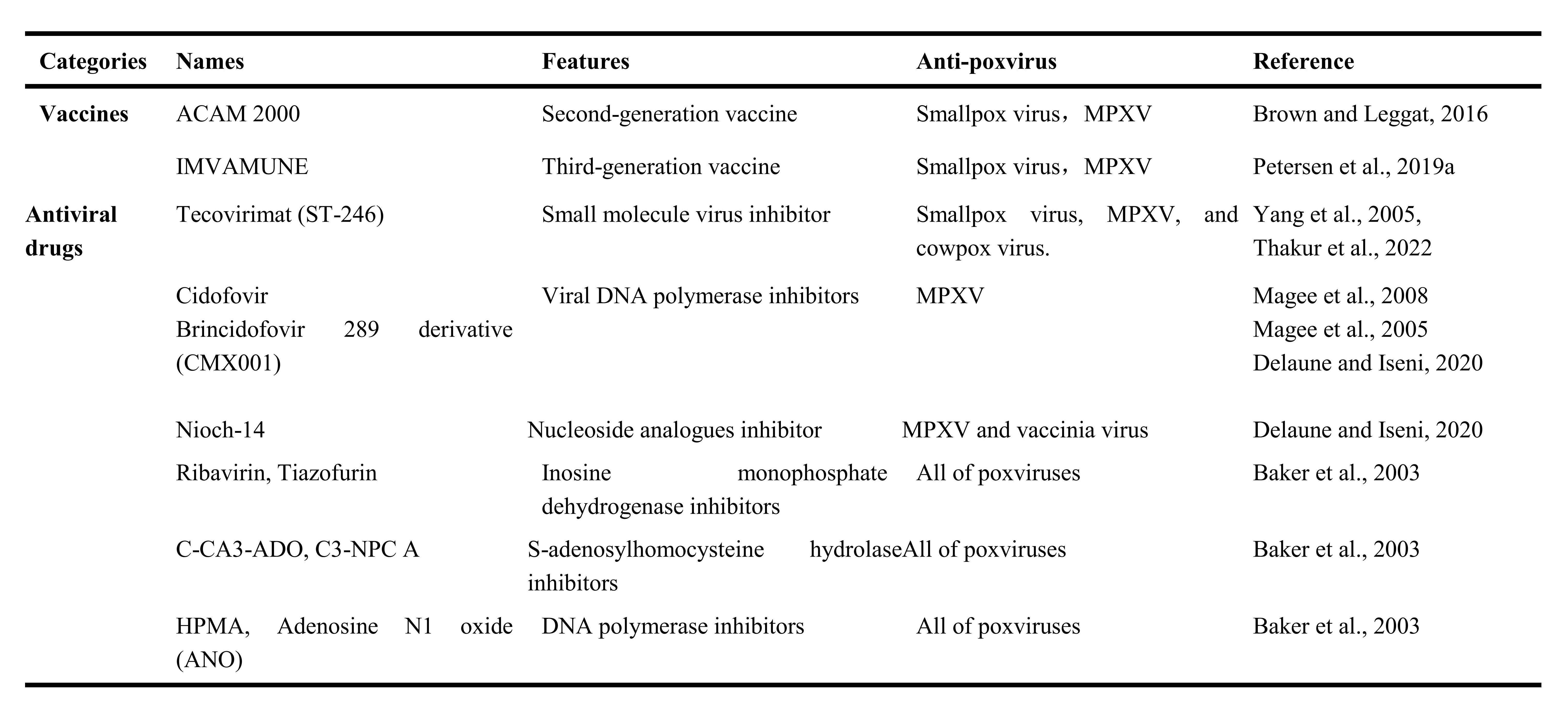Monkeypox pseudovirus
Since May 2022, monkeypox cases have been discovered in multiple countries and have rapidly spread globally. On July 23rd, the World Health Organization (WHO) announced that the monkeypox outbreak has constituted a "public health emergency of international concern", which is the highest level alert issued by the WHO for a global public health emergency. Although vaccines and drugs targeting smallpox virus provide options for combating monkeypox, there are currently no specific vaccines or specific drugs for MPV. Weizhen Biotechnology actively responded and developed a series of fake virus products that can be used for performance testing of MPV nucleic acid detection kits, assisting in research on the pathogenesis and prevention of monkeypox.
一、Product Introduction
Based on a comprehensive virus packaging platform and stable production process, Weizhen Biotechnology cloned and constructed the gene sequences of Monkeypox Virus (MPV) specific target sequence F3L and envelope protein B6R into lentivirus, adenovirus, and adeno-associated virus (AAV) vectors, successfully developing high-quality monkeypox pseudovirus products with good biosafety and stability.
Item number
|
Name
|
Specifications
|
MVLV10001
|
pLenti-Monkeypox Virus-B6R pseudovirus
|
≥1*10E8TU/ml, 1ml
|
MVLV10002
|
pLenti-Monkeypox Virus-F3L pseudovirus
|
≥1*10E8TU/ml,1ml
|
MVAD10001
|
pADM-Monkeypox Virus-B6R pseudovirus
|
≥1*10E10pfu/ml,1ml
|
MVAD10002
|
pADM-Monkeypox Virus-F3L pseudovirus
|
≥1*10E10pfu/ml, 1ml
|
MVAV10001
|
pAV-Monkeypox Virus-B6R pseudovirus
|
≥5*10E12vg/ml,1ml
|
MVAV10002
|
pAV-Monkeypox Virus-F3L pseudovirus
|
≥5*10E12vg/ml 1ml
|
*In addition to the F3L and B6R vectors and virus products mentioned above, we can also provide vector construction and virus packaging customization services for other monkeypox related genes to assist in the research of monkeypox virus. welcome to inquire!
二、Product Usage
Development and performance evaluation of monkeypox virus nucleic acid detection kit, effectiveness verification, and use as a positive standard for qPCR experiments.
三、Research background
1. Introduction to Monkeypox Virus
Monkeypox virus (MPV) belongs to the family Poviviridae and the genus Orthopoxvirus, which includes smallpox virus, cowpox virus, and smallpox virus. MPV is an enveloped linear double stranded DNA virus with a genome size of approximately 197kb. It is enveloped in a dumbbell shaped nucleus with a diameter of 140-260nm, and the virus particles are brick shaped or elliptical in shape. The MPV genome has a highly conserved central coding region of approximately 56-120 kb, flanked by variable regions and terminal repeat sequences. Based on genetic, geographical, and phenotypic variations, the virus has two distinct branches, namely West Africa and the Congo Basin, the latter also known as the Central African branch, with the strongest toxicity. Through whole genome sequencing, it has been determined that the virus transmitted in this epidemic belongs to the milder West African branch.

Monkeypox virus particles captured by color transmission electron microscopy (source from the website of New Scientist magazine in the UK)
2. Symptoms of MPV infection
The symptoms of human diseases caused by MPV are similar to smallpox, but its lethality and infectivity are not as good as smallpox virus. The incubation period of monkeypox is 5-21 days, starting with a fever phase that usually lasts for 1 to 3 days. Symptoms include fever, chills, severe headaches, lymphadenopathy, back pain, muscle pain, and extreme fatigue. After the fever period, there is a rash period, usually lasting 2-4 weeks. The patient first develops a rash on the face, which then spreads to other parts of the body. The rash lesions evolve from macules (flat base) to papules (raised, hard, painful), vesicles (filled with transparent fluid), pustules (filled with pus), and finally scabs. According to the branch and medical situation of MPV infection, the mortality rate of MPV is 0-11%, and the mortality rate of young children is even higher.
Symptoms of MPV infection(Narendra Kumar, Journal of Autoimmunity. 2022)
3. Mechanism of MPV invasion into cells
Unlike most DNA viruses, MPV replicates in the cytoplasm of infected cells rather than in the nucleus. During the replication process of MPV, two types of infectious viral particles are produced: intracellular mature virus (MV) and extracellular enveloped virus (EV), where MV enters the cell through microvesicles or membrane fusion, while EV enters through membrane fusion. MV has a layer of lipoprotein envelope outside, which wraps around the virus core and protein containing side bodies. It is relatively stable in the external environment and mainly participates in mediating host to host transmission; EV is formed by encapsulating the periphery of MV with a lipid membrane, and it originates from the Golgi apparatus or the nucleus. After completing the replication of viral DNA and assembly of viral proteins in the cytoplasm, MV is released through cell lysis, while EV leaves the cell through exocytosis.
It is worth noting that the replication, transcription, assembly, and release processes of MPV involve multiple different proteins.
The lifecycle of MPV(Narendra Kumar, Journal of Autoimmunity. 2022)
4. MPV transmission routes
Monkeypox is a zoonotic disease, which is a disease transmitted from animals to humans. At present, the host of MPV is still unclear, and rodents in Africa may be involved in the transmission of MPV infection. MPV can be transmitted through contact with bodily fluids, diseased skin or internal mucosa, respiratory droplets, or infected items of infected animals.
5. MPV detection method
Due to the difficulty in distinguishing the clinical manifestations of MPV infection from diseases caused by other poxviruses. Therefore, rapid and effective laboratory testing methods are crucial for controlling the outbreak of MPV.
①PCR
PCR technology is the preferred method for detecting monkeypox virus DNA. Generally speaking, the conserved regions of the extracellular envelope protein gene (B6R), DNA polymerase gene E9L, DNA dependent RNA polymerase subunit 18 (RPO18) gene, and complement binding protein C3L, F3L, and N3R genes are usually selected as targets for PCR amplification. PCR diagnostic specimens can directly come from rashes - skin, fluid, or scabs. In addition, recombinant polymerase chain reaction (RPA), loop mediated isothermal amplification (LAMP), and restriction length fragment polymorphism (RFLP) techniques have also been developed for MPV DNA detection.
② Serological experiment
Enzyme linked immunosorbent assay (ELISA) can detect specific IgM and IgG antibodies in the serum of patients. Due to the antigen cross reactivity between MPV and other poxviruses, this method has low specificity.
③ Electron microscopy observation
Electron microscopy can be used to observe the morphological characteristics of viruses. However, due to the inability to distinguish MPXV from other poxviruses in morphology, this method lacks accuracy. In addition, the sensitivity of electron microscopy observation is not high and the sample preparation is complex with a long cycle.
④ Other methods
Immunochemical analysis and multiplex immunofluorescence imaging can be used for MPV antigen detection.
6. Prevention and treatment of MPV
Most human monkeypox infections are initially caused by animal to human transmission, and contact with sick or dead animals should be avoided, as well as close contact with infected individuals or contaminated substances. At present, there are no specific vaccines or drugs for MPV infection. According to reports, smallpox vaccine can provide 85% immune protection against monkeypox. At present, two vaccines for preventing smallpox virus and MPV have been approved: the second-generation vaccine ACAM 2000 and the third-generation vaccine IMVAMONE. In addition, anti smallpox virus drugs can also exert a certain anti MPV effect.
Candidate vaccines and antiviral drugs for the prevention and treatment of human poxvirus(Gong Q et al. Virologica Sinica. 2022)
Reference source
1、https://www.who.int/health-topics/monkeypox#tab=tab_1.
2、Kumar N, Acharya A, Gendelman HE, Byrareddy SN. The 2022 outbreak and the pathobiology of the monkeypox virus. J Autoimmun. 2022 Jul;131:102855. doi: 10.1016/j.jaut.2022.102855. Epub 2022 Jun 25. PMID: 35760647.
3、Gong Q, Wang C, Chuai X, Chiu S. Monkeypox virus: a re-emergent threat to humans. Virol Sin. 2022 Jul 9:S1995-820X(22)00120-1. doi: 10.1016/j.virs.2022.07.006. Epub ahead of print. PMID: 35820590.
4、Kabuga AI, El Zowalaty ME. A review of the monkeypox virus and a recent outbreak of skin rash disease in Nigeria. J Med Virol. 2019 Apr;91(4):533-540. doi: 10.1002/jmv.25348. Epub 2018 Nov 19. PMID: 30357851.









